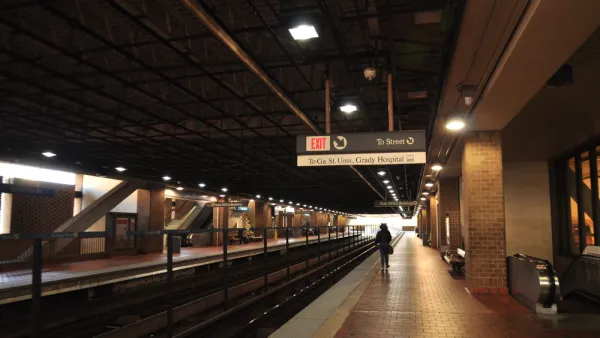After a ballot measure approved the Metropolitan Atlanta Rapid Transit Authority's (MARTA) expansion into a suburban county outside of Atlanta, the transit agency could set precedent on how to effectively adapt to sprawling suburbs.
In a 1971 referendum, Clayton County (an adjacent county south of Atlanta that houses the city's enormous airport) rejected MARTA's service, as its white residents feared the transit system would make it easier for blacks to reach their suburbs. However, four decades later, with Clayton County's bus service collapsing, 74 percent of the county's diverse, largely working-class voters approved a measure to join MARTA and pay for the service with a new sales tax.
As discussed on The Week by Jacob Anbinder, MARTA is the only transit agency in the country that does not receive state-government funding. Despite a growing population in the last four years, between 2010 to 2013, the agency saw a 6,000-person decline in transit commuters, the most of any American city.
Moreover, Atlanta's commuting patterns are not the typical hub-and-spoke style. Anbiner discusses how, "Atlantans need to go from suburb to suburb more than they need to go downtown. Four in five Clayton commuters work somewhere other than Atlanta; at the same time, four in five people who work in Clayton County don't live there. Like Atlanta's aptly named Perimeter Center Mall, the new center of MARTA's network may well be at the perimeter."
FULL STORY: How public transportation can adapt to suburban sprawl

National Parks Layoffs Will Cause Communities to Lose Billions
Thousands of essential park workers were laid off this week, just before the busy spring break season.

Retro-silient?: America’s First “Eco-burb,” The Woodlands Turns 50
A master-planned community north of Houston offers lessons on green infrastructure and resilient design, but falls short of its founder’s lofty affordability and walkability goals.

Delivering for America Plan Will Downgrade Mail Service in at Least 49.5 Percent of Zip Codes
Republican and Democrat lawmakers criticize the plan for its disproportionate negative impact on rural communities.

Test News Post 1
This is a summary

Test News Headline 46
Test for the image on the front page.

Balancing Bombs and Butterflies: How the National Guard Protects a Rare Species
The National Guard at Fort Indiantown Gap uses GIS technology and land management strategies to balance military training with conservation efforts, ensuring the survival of the rare eastern regal fritillary butterfly.
Urban Design for Planners 1: Software Tools
This six-course series explores essential urban design concepts using open source software and equips planners with the tools they need to participate fully in the urban design process.
Planning for Universal Design
Learn the tools for implementing Universal Design in planning regulations.
EMC Planning Group, Inc.
Planetizen
Planetizen
Mpact (formerly Rail~Volution)
Great Falls Development Authority, Inc.
HUDs Office of Policy Development and Research
NYU Wagner Graduate School of Public Service





























